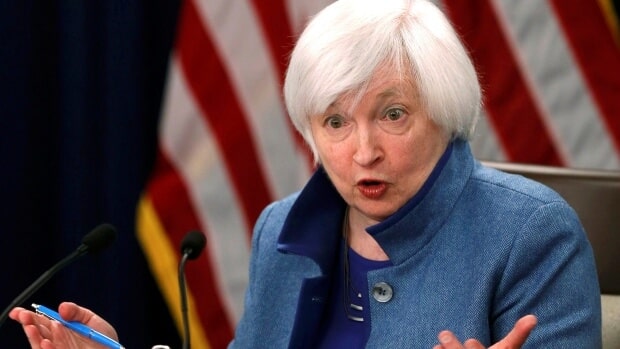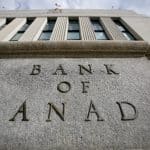Some think Fed may put off rate increases until more is known about president’s agenda
The U.S. Federal Reserve has left its key interest rate unchanged at a time of solid economic gains but also heightened uncertainty surrounding the new Trump administration.

The Fed said in a statement ending its latest policy meeting Wednesday that the job market has continued to strengthen, inflation has climbed closer to its two per cent target and economic activity remains steady. But it signalled that it wants more time to monitor the economy and that it still envisions a gradual pace of rate increases. It offered no hints about when it will resume raising rates.
- U.S. Fed hikes interest rate for first time in 2016 — with more to come in 2017
- U.S. Fed chair carefully avoids debate over Donald Trump’s economic plan
Many economists think the Fed may put off further rate increases until more is known about President Donald Trump’s ambitious agenda, or whether his drive to cancel or rewrite trade deals will slow growth or unsettle investors.
The statement was not accompanied by updates to the Fed’s economic forecasts or by a news conference with Chair Janet Yellen, both of which occur four times a year.
‘On the sidelines’
“We expect the Fed to remain on the sidelines over the next couple of meetings, waiting to see how the U.S. economy performs amidst the heightened uncertainty related to fiscal and trade policies in particular,” TD senior economist Michael Dolega said in a commentary.
“Having said that, should economic activity continue to progress at a moderate pace, as is our baseline scenario, we do expect the Fed to hike before the mid-year mark and once again in the second half of this year so as to not fall behind the curve,” Dolega said.
BMO deputy chief economist Michael Gregory said they’re still looking for a rate hike in June.
“But we, just like the [rate-setting Federal Open Market Committee], are waiting to see what gets done on Capitol Hill and in the White House,” he said in a commentary.
Last month, the Fed modestly raised its benchmark short-term rate for the first time since December 2015, when it had raised it after keeping the rate at a record low near zero for seven years. The Fed had driven down its key rate to help rescue the banking system and energize the economy after the 2008 financial crisis and the Great Recession.
When it raised rates last month, the Fed indicated that it expected to do so three more times in 2017. Yet confusion and a lack of details over what exactly Trump’s stimulus program will look like, whether he will succeed in getting it through Congress and what impact it might have on the economy have muddied the outlook.
Trade fight could slow economy
And while Trump’s tax and spending plans are raising hopes for faster growth, his combative approach to trade relationships with such countries as China and Mexico could slow the economy if U.S. trading partners retaliate and collectively impede the flow of imports and exports.
Nariman Behravesh, chief economist at IHS Markit, predicts that the economy will grow a modest two per cent to 2.5 per cent this year, before accelerating next year to 2.6 per cent to 2.7 per cent on the assumption that Trump’s policy proposals will have begun to take full effect by then.
The outlook for both years would mark an improvement over the economy’s lacklustre growth of 1.6 per cent in 2016, its weakest performance since 2011.
- Get ready for a 65-cent loonie next year, investment bank predicts
- U.S. economic growth rate rose in Q3, but slowdown expected
Even though economic growth, as measured by the gross domestic product, was underwhelming last year, the job market appears close to full health. Hiring was consistently solid in 2016, and the unemployment rate ended the year at 4.7 per cent, just below the 4.8 per cent level the Fed has identified as representing full employment.
And inflation, by the Fed’s preferred measure, rose 1.6 per cent in the 12 months that ended in December, moving closer to the Fed’s two per cent goal.
American manufacturing has been showing tentative signs of a comeback. Factories grew last month at the fastest pace in more than two years.
Manufacturing has been expanding despite a strong U.S. dollar, which makes American products more expensive in overseas markets. Last month, businesses increased their investment in industrial machinery, semiconductors and other high-cost items. And a measure that tracks business spending plans has been rising.
with files from CBC News
The Associated Press Posted: Feb 01, 2017 2:05 PM ET Last Updated: Feb 01, 2017 2:49 PM ET













